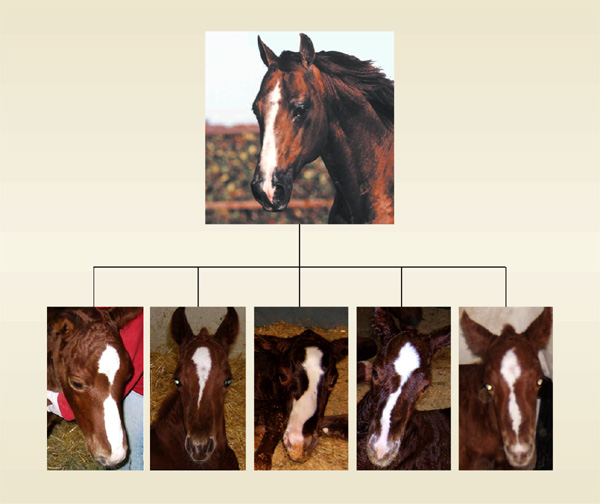
This is a placeholder text
Group text
by Abhay on 24 May 2008 - 01:05
by jletcher18 on 24 May 2008 - 01:05
how many different ways can this go!
john
by VonIsengard on 24 May 2008 - 01:05
I almost posted that link here yesterday when I saw it....anyone see the movie Gattica? Makes you wonder where we'll be in 50 years.
by jletcher18 on 24 May 2008 - 02:05
wonder or worry?
john
by yellowrose of Texas on 24 May 2008 - 02:05
Ill be 115 years old then.....
by mahon on 25 May 2008 - 06:05
As you can see the clones are not identicle to the donor dog. Clones are no more identicle to the donor then is a sibling to his or her siblings. So how is it they can call it a clone. If a tree or a bush is cloned the clone is of the same exact age and genetic duplicate to the donor. Not the case in animals. Depending on the way the genes split is how the difference is modified in each embyo . So they say it is the exact genetic make-up. So are my three brothers exact same parents. Each of us look different and are of different size and shape we are not twins. The theory that they can clone an animal to an exact match to the donor in size color and temperment is a joke. $100,000 for a close representation of your dog is what the ad should say.
Just my edjucated oppinion.
by darylehret on 25 May 2008 - 14:05
Having the same parents does not mean your brothers have the same combination of genes from each parent. Each recombination is different of course. But it's true, that even among clones, there will be differing epigenetic factors, which will contribute to slight variances, after the egg is fertilized but before conception, many regulatory genes are coded to be "turned on" or remain silent. Also, the maternal host for the clone will imprint differing behaviors, so that the best host for the clone, may be the actual cloned dog itself. Other environmental differences could easily play a part, such as early diet that affects overall growth and development, the absence of similar littermates that helped shape the "original's" behavior, and many other possibilities even long after weaning. Closer for sure, but not exact.
by mahon on 25 May 2008 - 19:05
Yes I know that my DNA and my brothers are different in their markers to a degree that are codes are similar but not excact.
I have seen several cattle clones and pig clones that are much cheaper then $100,000.00 a clone and all the lab test results for feed gains, structure and color all say they are no more similar then siblings. It was'nt until a month or two ago that the USDA allowed the carcasses to go into the food chain. Pretty bad if you produce a clone that is so inferior that you have to kill it, and you could not even sell it for rendering price.
What would you be able to do with a $100,000.00 inferior clone of your german shepherd or border collie ?
just a thought
by jc.carroll on 25 May 2008 - 21:05
Genetically, clones are identical to the parent. Same genotype. But physically there can be a wide variety of variation (phenotype). There goes another myth about identicallity (is that a word?). Nutrition can play a big part in which genes are accessed, both in prenatal and neonatal developement.
And disposition? That is a completely random roll as well. How many identical twins have identical personalities? It's easy to say that cloned sheep or white mice all look and act the same, their genetic strands have been so homogenized that even without cloning, most lab sheep and white mice look (and act) the same to begin with. That's what makes them so useful in labs, the provide a constant baseline for analysis.
Once you through genetic diversity into the mix, things get very interesting very quickly. And even clones are no longer "the same."
Here's an example: a parent horse and her five clones.
Blaze patterns in the first five Smart Little Lena clones.

Contact information Disclaimer Privacy Statement Copyright Information Terms of Service Cookie policy ↑ Back to top




